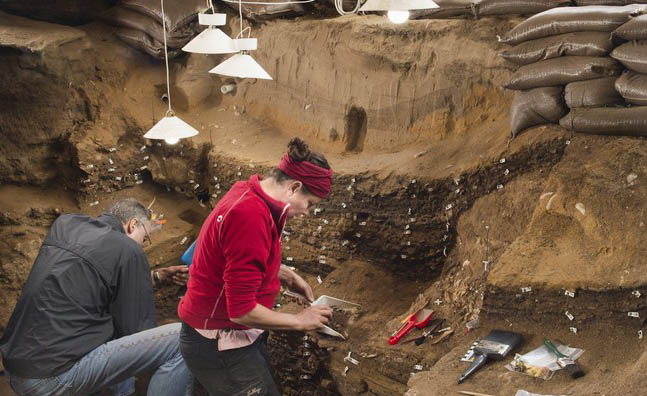Archaeologists have unearthed the oldest known abstract pencil drawing by human hand — which looks like a present day hashtag — from South Africa and is over 70,000 years old.
The drawing bears a crosshatched pattern made up of nine fine lines, like a hashtag and was made with a piece of ocher used as a pencil, said an international team led by Luca Pollarolo, research fellow at the University of the Witwatersrand (Wits) in Johannesburg, South Africa.
It was discovered on the surface of a small piece of siliceous rock (silcrete), that is 73,000-year-old, while analysing stone tools collected during an excavation in South Africa’s Blombos Cave.
This predates previous drawing from Africa, Europe and Southeast Asia by at least 30,000 years.
To prove these lines were deliberately drawn by humans, the team reproduced the same lines using various techniques.
They tried fragments of ocher with a point or an edge and also applied different aqueous dilutions of ocher powder using brushes.
Using techniques of microscopic, chemical, and tribological analysis, they then compared their drawings to the ancient original.
Their findings, published in the journal Nature, confirmed that the lines were intentionally drawn with a pointed ocher implement on a surface first smoothed by rubbing.
These findings demonstrate that the first Homo sapiens in this region of Africa used different techniques to produce similar signs on different materials, which supports the hypothesis that these markings served a symbolic function. IANS
